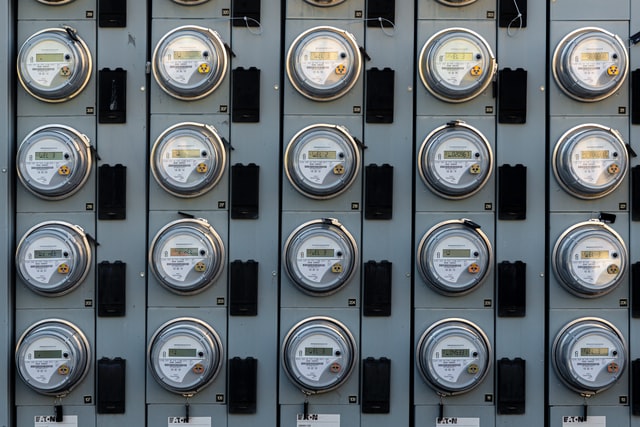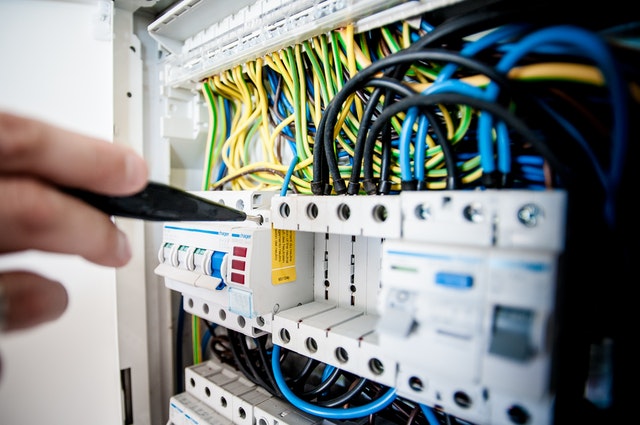Homeownership often necessitates basic knowledge and know-how concerning a home’s primary systems like its electrical system. While you certainly don’t have to be an electrician to understand some of the basic components of your home’s electrical system, you should know when your system might require the services of one or when you can tackle specific issues yourself.
In this article, we’ll provide an overview of electrical basics and what the various components of your electrical system do. We’ll also explore some common household electrical problems and how you might address them. Keep in mind that electricity is quite dangerous. You should never attempt to maintain or repair your electrical system without knowledge and experience. If you’re in any doubt about an electrical problem, you should always contact a qualified electrician.
Electrical Basics 101
Some homeowners may not be aware precisely of what they are responsible for when it comes to their home’s electrical system. First, be aware that the utility company that manages electricity for the municipality is responsible for the line portion of customers’ electric service. This includes all maintenance, repairs, and replacement costs for equipment up to the line’s attachment point to the home. At the point of attachment to the house, the homeowner is responsible for the costs of repairs or replacement parts.
The home’s electrical system is made up of many different components. These components work together to provide electrical power to the house. If something goes wrong with one of them, the system will be affected, and the homeowner will need to take measures to troubleshoot the problem and apply the necessary fix, even if that fix is to contact a certified electrician.
Electrical Components

Having a basic knowledge of your electrical system’s components is essential so that you can understand how they work and when they may be malfunctioning. Here, we’ll provide a brief overview of each of your system’s primary parts.
Electrical Meter
The utility company provides service cables to your home’s electrical meter. These cables may be above or below ground. The cables extend the meter’s base and deliver power service to the home. The meter itself measures the amount of your electricity usage so that the utility company knows what to charge you on your electric bills. The meter measures each instance when electricity is used in your home. As you already likely know, the more the meter registers electricity use, the higher your electric bill.
Main Service Panel
From the meter, the electrical service feeds will extend to your home’s main service panel. Typically, people refer to this panel as the breaker box. Two large wires connect to screw terminals referred to as “lugs.” These lugs are located in the breaker box and power the entire panel. There is also a neutral panel (the other two wires are ‘hot’ wires). Electricity travels through the hot wires to the breaker box and then through your home’s electrical system. The electricity completes the circuit by returning to the box via the neutral wire.
Main Circuit Breaker
Within your service panel is a large main breaker. This main circuit breaker is a switch that controls power to the rest of the circuit breakers in the panel. Its size depends on the electrical service capacity of the home. Standard panels, for instance, offer a 200-amp service. Older panels, however, may only offer 150 or even fewer amps.
Whatever the maximum amp service, the main circuit provider will allow. For instance, if the maximum amps are 200, the main breaker will allow that much electrical service. If electrical use exceeds 200 amps, the main circuit breaker will trip, cutting off power. No current flows to the panel when the main breaker trips.
Turning off the main breaker means that none of the other breakers in your panel will receive power. The result, of course, is no electricity for any of your home’s circuits–no power to the refrigerator, lamps, computer, television, etc. On the other hand, remember that electricity is still present in the service wires connecting to the lugs. Unless you shut off the power disconnect switch or your utility company shuts off the power, there will still be power—just not at your circuits.
Disconnect Switch
The disconnect switch is typically located on the home’s wall near their electricity meter. You may need to turn off power in the event that you’re having electrical work done on your home. Not all houses have a disconnect switch. If yours does not, the main circuit breaker serves as the system’s disconnect switch.
Branch Circuit Breakers
Your breaker box will include a series of breakers in addition to the main circuit breaker. Each breaker controls the flow of electricity to a branch circuit. For instance, one breaker might be associated with electricity to the laundry room, another to a section of the second floor, and still another to the kitchen. If electrical use exceeds the branch allowance of electricity, it will trip, cutting off electric flow to the branch circuit. For instance, running too many kitchen devices at once can cause the breaker to trip. It will need to be reset. Then, you’ll have to reduce the number of devices you’re using at once.
Preventing Damage to Your Electrical System

Most people don’t think about their home’s electrical system until something goes wrong. However, there are steps you can take to protect this essential system of your house. For instance, you should repair roof leaks. Roof leaks, often caused by storm damage, can wreak havoc on your home’s electrical system and necessitate costly repairs. Other measures you can take to prevent electrical system damage include:
- Unplug items when not in use
- Ensure that electrical outlets are not installed near water
- Replace defective wires
- Don’t overload your electrical circuits
- Install water-safe outlets in the kitchen, bathroom, and laundry room
What Are Some Common Electrical Problems and Their Solutions?

Your home’s electrical system should not pose problems on a routine basis. If it does, that’s cause for concern and should warrant an inspection from a professional electrician. However, like any system, your electric system may experience problems from time to time. We’ll outline a few of the most common issues next:
Power Surge
A power surge is a high-voltage surge of electricity that disrupts your normal electrical flow. It can lead to damage, especially to appliances plugged into outlets. A power surge can result because of problems with your system and when the power comes back on after being out because of a storm. If your home experiences frequent surges, be sure to contact your electrician right away.
Tripped Breaker
Tripping a breaker is a common enough occurrence. As mentioned earlier, it happens most often when we use too much electricity in one area of the home, like the kitchen. To remedy this, you’ll need to flip the tripped breaker back to its normal state. If the breaker continues to trip and for no apparent reason, you’ll need an inspection. There is likely some problem with the circuit or even the breaker switch itself.
Ungrounded Outlets
Your home’s outlets should be grounded. That means that there is a place where excess electricity can go if there’s a short circuit or some other wiring problem. Grounded outlets provide an additional safeguard against electrical fires. Without a ground, the excess electricity can travel into the wood or damage the appliance plugged into the outlet. An ungrounded outlet is also an electrocution risk for humans. If you have ungrounded outlets in your home, you should hire your electrical contractor to update them with a ground.
Uncharacteristically High Electric Bills
If you notice that your electric bill has increased, but you have not increased your power usage to warrant the spike, you may want your system inspected. There may be an issue with your wiring. There may be a leak present that is causing damage to some part of your system. Also, your major appliances that are older and not energy efficient could be guzzling more power than you realize, and they can lead to higher utility bills.
Not Up to Code
If any aspect of your home’s electrical system isn’t up to code, you should have it updated. You may not be aware of code problems; however, if you decide to sell your home, an inspector may point out where your electrical system is below code. If you have an older house, you should request your own electrician to provide an inspection. Electrical systems below code may have hazards that you’ll want to eliminate.
Home Warranty Coverage for Electrical Systems
A home warranty is a valuable service contract that provides coverage for various components of a home’s electrical system. Home warranty plans typically cover internal electrical systems, including wiring, lighting fixtures, electrical panels, circuit breakers, switches, outlets, and more.
These plans offer protection against unexpected repair or replacement costs due to everyday wear and tear on electrical systems. For example, a home warranty can help cover the cost of repairing or replacing wiring, junction boxes, panels, circuit breakers, and fuses, which are essential parts of a home’s electrical system.
Homeowners benefit from the peace of mind that comes with having a plan in place to address electrical issues promptly and affordably. It’s important to note that while home warranties cover breakdowns resulting from normal wear and tear, they may not cover issues caused by natural disasters or other specific circumstances.
Remember that electricity can be deadly. Don’t work with it unless you’re absolutely certain you know what needs to be done. If you have any doubts, contact your electrician or consider joining a course, enrolling in electrical school and getting certified as an industry professional. Exploring the best jobs for energy professionals can pave the way for a rewarding and impactful career path. Avoid taking unnecessary risks where your electrical system is concerned. Electrical accidents even occur to highly trained electricians. Use this overview as a simple household guide. If you need any work performed that’s more involved than flipping your tripped breaker back to the normal position, always consult with the pros.




